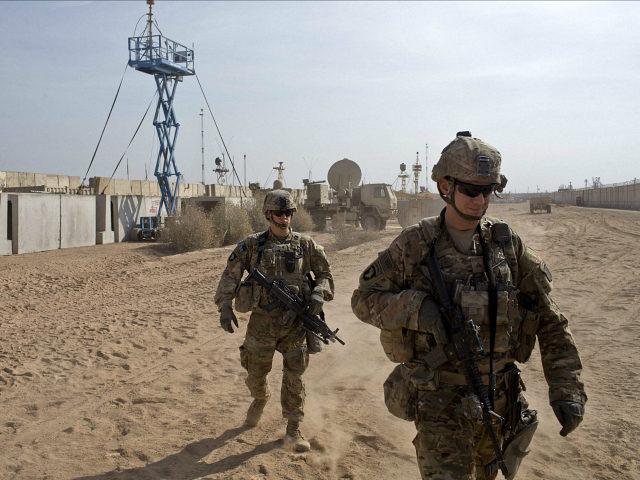A Department of Defense spokesman revealed Monday that the Pentagon cannot employ U.S. President Donald Trump’s strategy for the war in Afghanistan because critical military decisions have not yet been made.
Although, unlike his predecessor, the commander-in-chief has granted U.S. military commanders more freedom to act independently, Breitbart News learned from the Pentagon last week that the United States is still fighting the top terrorist group in the country, the Afghan Taliban, under authority granted by former U.S. President Barack Obama.
Referring to the implementation of Trump’s strategy, American Col. Robert Manning, a U.S. Department of Defense (DOD) spokesman, told reporters on Monday, “We’re just not there yet. There is work to be done here within the department and answers that need to be provided,” reports Voice of America (VOA).
On August 21, President Trump unveiled his “conditions-based approach” for ending the 16-year-old war in Afghanistan before an audience of about 2,000 American service members at Joint Base Myer in Virginia, right outside the U.S. capital.
“Conditions on the ground, not arbitrary timetables, will guide our strategy from now on,” declared Trump.
Soon after Trump’s address, U.S. Secretary of Defense James Mattis revealed that he was still waiting on Joint Chiefs Chairman Gen. Joseph Dunford to get him a plan “right away.”
“We’ve obviously been discussing this option for some time,” the Pentagon chief said during a visit to Iraq this month. “When he brings that to me, I’ll determine how many more [troops] we need to send in.”
While announcing his plans for Afghanistan, Trump offered no details on how many additional American troops the U.S. will deploy to the country or how they would support the struggling Afghan security forces, saying, “America’s enemies must never know our plans or believe they can wait us out. I will not say when we are going to attack, but attack we will.”
However, VOA has learned from anonymous sources that the United States may send up to 4,000 more service members to Afghanistan.
Gen. Joseph Votel, the chief of U.S. Central Command (CENTCOM), charged with American military operations in the Middle East and Afghanistan, indicated last week that he expects the first deployment to arrive “pretty quickly,” within days or weeks.
Nevertheless, Col. Manning appeared to walk back the top general’s remarks about American troops deploying soon.
“We’re approaching this very deliberately,” the DOD spokesman told reporters. “Once the chairman [of the Joint Chiefs of Staff] provides the recommendations, the secretary will determine how to move forward and how many additional troops we’ll need to send.”
“Manning’s comments Monday seemed to reflect an ongoing back-and-forth discussion among U.S. officials about how to proceed on Afghanistan,” points out VOA.
This month, Mattis indicated that the Trump administration was considering various options for dealing with the war in Afghanistan, including increasing the American military footprint by thousands of forces, the complete withdrawal of troops, and using private contractors.
“We’re sharpening each one of the options so you can see the pluses and minuses of each one so that there’s no longer any new data you’re going to get. Now just make the decision. There are the options,” explained Mattis about the Afghanistan plan the Pentagon is preparing for the president.
During his war strategy speech, Trump made it clear that complete withdrawal of American troops is out of the question.
According to the U.S. military, the Afghanistan-Pakistan region is home to the largest concentration of terrorist groups (twenty) in the world.
Since the war started in October 2001, the United States has devoted about $714 billion in American taxpayer funds to the ongoing conflict, including nearly $120 billion on nation-building efforts — mainly the development of the Afghan National Defense and Security Forces (ANDSF), which includes military and police officers.
Nonetheless, terrorists in the country, primarily the Afghan Taliban, have killed 2,258 American troops and injured another 20,263 since the beginning of the war, DOD reports. The vast majority of U.S. casualties took place under Obama’s tenure.
While U.S. officials have put the number of American forces in Afghanistan at about 8,300, the exact number seems to be unknown
“One of the challenges for Pentagon planners is to determine exactly how many troops the U.S. has in Afghanistan,” reports VOA, adding, “that figure [8,300] does not necessarily account for temporary support personnel or for defense contractors.”

COMMENTS
Please let us know if you're having issues with commenting.